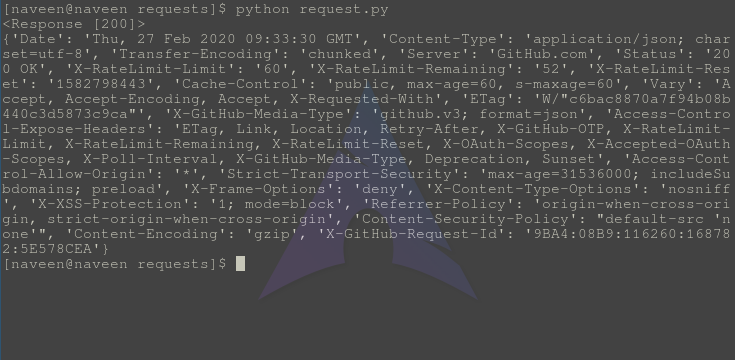Python requests are generally used to fetch the content from a particular resource URI. Whenever we make a request to a specified URI through Python, it returns a response object. Now, this response object would be used to access certain features such as content, headers, etc. This article revolves around how to check the
response.headers
out of a response object.
response.headers
returns a dictionary of response headers. To check more about headers, visit –Different HTTP Headers
How to use response.headers using Python requests?
To illustrate use of response.headers, let’s ping API of Github. To run this script, you need to have Python and requests installed on your PC.
Prerequisites –
- Download and Install Python 3 Latest Version
- How to install requests in Python – For windows, linux, mac
Example code –
- Python3
# import requests moduleimportrequests# Making a get requestresponse =requests.get('https://api.github.com')# print responseprint(response)# print headers of responseprint(response.headers) |
Example Implementation –
Save above file as
request.pyand run usingPython request.py
Output –

Check that
headers
at the start of the output, it shows the different headers. Headers are used for different purposes such as Authentication/ Passing and retrieving data from the server, etc.
Advanced Concepts
There are many libraries to make an HTTP request in Python, which arehttplib
,urllib
,httplib2
,treq
, etc., butrequests
is the one of the best with cool features. If any attribute of requests shows NULL, check the status code using below attribute.response.status_code
If status_code doesn’t lie in range of 200-29. You probably need to check method begin used for making a request + the url you are requesting for resources.
Don’t miss your chance to ride the wave of the data revolution! Every industry is scaling new heights by tapping into the power of data. Sharpen your skills and become a part of the hottest trend in the 21st century.
Leave a Reply